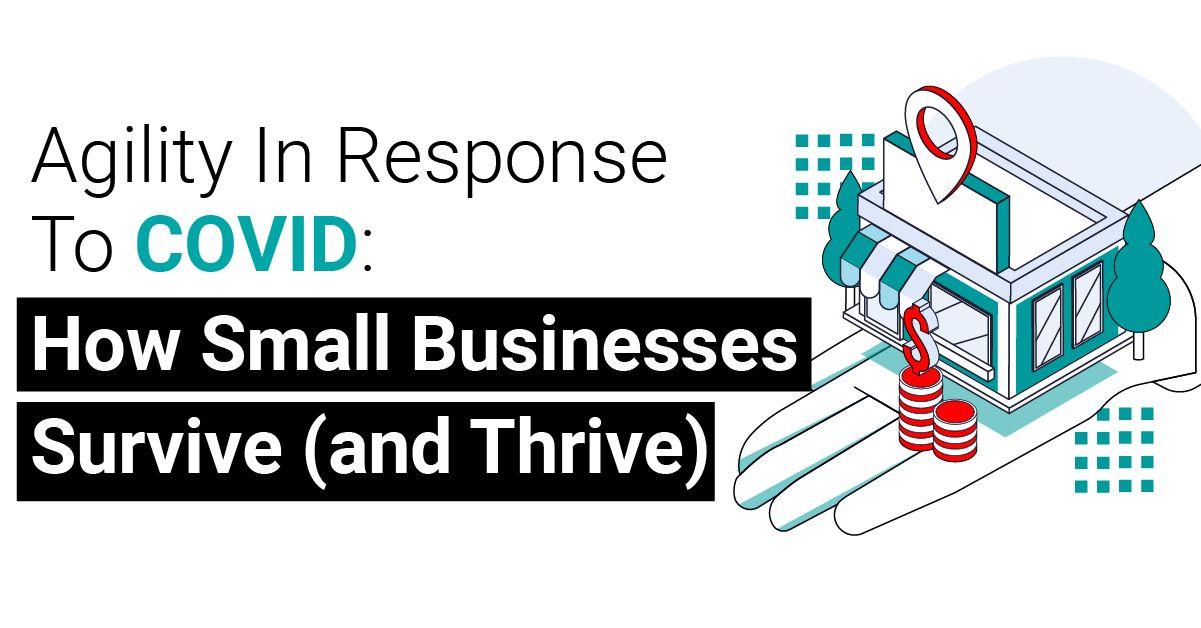
Agility In Response To COVID: How Small Businesses Survive (and Thrive)
Despite the global pandemic having dire and long-lasting consequences for small to medium-sized businesses (SMBs), some have managed to weather the storm and surface unscathed.
Here are three positive trends that have emerged as the pandemic starts to abate:
- Stronger, new-found efficiency
- Heightened organizational capabilities
- A boost in digital transformation efforts
These are the building blocks of agility in a business environment and show tangible resilience and capacity for SMBs to look at reinventing themselves, after the shockwaves of the Covid-19 pandemic.
Company agility and SMB digital adaptation: current stats
Research conducted by the OECD (The Organization for Economic Co-operation and Development) across 32 countries helps one get a clearer picture of how small companies have fared over the past year: Agility and productivity growth post-pandemic are set to go up by 1% annually until 2024 in the U.S. and six European economies. This is impressive considering that for 70-80% of SMBs, revenue plummeted between 30-50% during 2020 --a significant drop! Pre-pandemic, 80% of SMBs in the US and Europe had their own websites, and more than two-thirds had employees working via mobile devices. As the pandemic abates there has been a 70% increase in businesses moving online, a clear indication of a more permanent move to online business models for SMB’s. Businesses using digital software tools prior-pandemic are likely to increase digitization by 30% in 2021 and beyond.
SMBs improving tech capabilities: a recipe for success
Remote work, the need for social distancing, as well as remote delivery services resulted in a quick and more profound digital approach, such as:
- Cloud-based solutions
- Video communications
- Online sales
This is a bold step, but implementation is no mean feat – we need the people to back it all up so that processes can be properly applied. Now is the time for SMBs to relook their digital strategies and evaluate how they can benefit and boost business.
Virtual interaction and remote work agility
General pros and cons of working from home
Remote work, like most things, has its pros and cons. Some say the ability to work from home has driven employee productivity, while others disagree. Why?
It comes down to the working individual and the following factors:
- Appropriate workspace - do you stare at a wall all day?
- The right tools - you need equipment and a good connection
- Overall working environment - what distractions are there?
SMBs reaping the rewards of remote work
SMBs are at an advantage when it comes to remote work.
Here’s why:
- In smaller companies, there are fewer layers between leadership and frontline workers making it easier for managers to tailor-make policies for different teams.
- It is also easier for the top dogs to have regular one-on-one meetings and instil a culture of ‘checking in’ on a more personal level.
- The longer-term advantages of this increased virtual interaction and agility to work from home? Greater staff satisfaction, loyalty, and productivity.
The long and short: SMBs have learnt to adapt in the face of adversity --in turn building resilience for the future. For that, we commend them! Those that embrace the necessity to be agile will have a head start on weathering another crisis, which some say is inevitable.
Read the full article here.